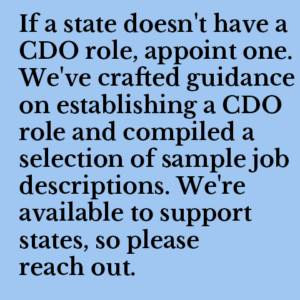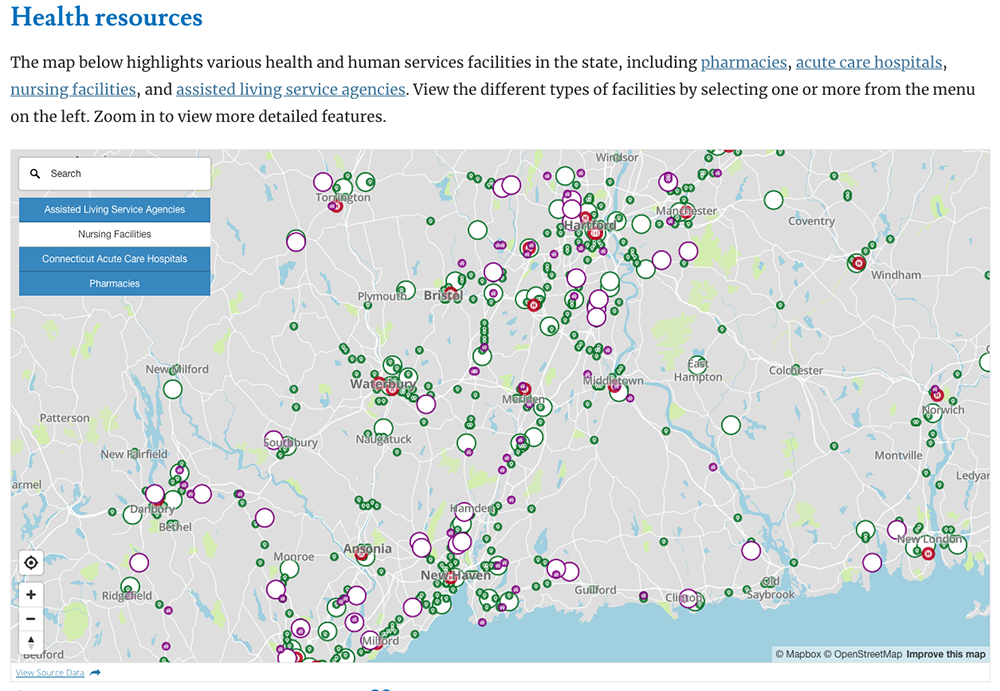7 Ways to Boost Data Impact in Response to the Pandemic
April 30, 2020 | By Tyler Kleykamp
The COVID-19 pandemic highlights the critical role data plays in keeping the public informed and keeping ahead of the crisis. On a daily basis, governors report on new data related to COVID-19 cases, hospital caseload, and weekly jobless claims. The pandemic also shows the importance of integrating data sets across agencies and programs. For instance, the new Pandemic EBT program needs to match data so that families who are losing access to free and reduced-price meals at school can continue receiving important nutritional resources at home.
The 25 state Chief Data Officers (CDOs) across the country who make up the State Chief Data Officers Network are stepping up to support their states’ efforts to use data. Whether accounting for supplies of personal protective equipment, noting which hospitals are nearing capacity, or reporting accurate testing data to the public, state CDOs play an important role in improving how data is shared and used.
Adopting effective practices in the COVID-19 response will help states move from crisis to recovery. Right now states are focused on sharing data about testing, infection rates in nursing homes and correctional facilities, and unemployment. In the future, state leaders will need the right data to inform policies on how to best reopen child care centers, economic sectors, and schools.
Our review of State of the State speeches found that data was rarely mentioned, and often not at all. Now, virtually every governor is basing their decisions on when to reopen state economies on data. If state leaders want to ensure that they have data readily available to support their decisions, the status quo won’t help them. We don’t have six months to negotiate one-off data sharing agreements, and we can’t continue keeping data in silos.
What can state leaders do to advance their use of data? The State CDO Network has issued a report on best practices to improve states’ ability to share and use data:
 Coordinate data management. Establish an interagency data coordinating body, ideally led by the Chief Data Officer (CDO).
Coordinate data management. Establish an interagency data coordinating body, ideally led by the Chief Data Officer (CDO). - Remove barriers to data sharing. Several states like Arizona and California are leveraging enterprise memorandums of agreement (MOA) to create streamlined and transparent legal processes necessary for data sharing.
- Make data discoverable. Even when data is protected, the information about what data each state agency has are generally not. Virginia recently released a public metadata catalog detailing the data holdings of many of its agencies.
- Format data to be useful. Ensure any data exchanged is in a machine-readable format (searchable, sortable, and digital) at the finest level of granularity allowed by law that’s necessary for the intended use.
- Centralize data access across agencies. Indiana and North Carolina have statewide data warehouses that can readily secure new sources of data and make them available to appropriate individuals for analysis. Data that can be shared within government should be accessible through a centralized clearinghouse or repository.
- Publish public data as open data. When data is public, make sure it’s available through the state’s open data website. Connecticut, New Jersey, and New York are publishing COVID-19 and other related datasets on their open data portals.

Map of Health Facilities in Connecticut. Via data.ct.gov PDFs and Dashboards are great for communicating top-level findings, but should be accompanied by machine-readable data.
- Lead with the analysis. Not everyone is comfortable with or has the time to work with raw data. State leaders and the public often need easily digestible information at their fingertips. Readily available reports and dashboards can help people answer questions quickly. Maryland’s COVID-19 website provides easy access to top level statistics.
With executive support, Chief Data Officers can play a critical role in supporting emergencies like COVID-19 by using their centralized position to get the right data to the right people in a timely fashion. As state governments adjust to remote work, these practices will improve the way agencies communicate about and use data. It will also better prepare states for any future outbreaks that may impact the people and families they serve.
Tyler Kleykamp leads the State CDO Network for the Beeck Center, and is the former Chief Data Officer for the State of Connecticut. Follow him on Twitter at @TKleykamp